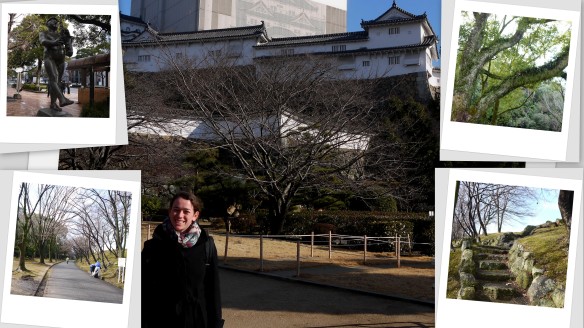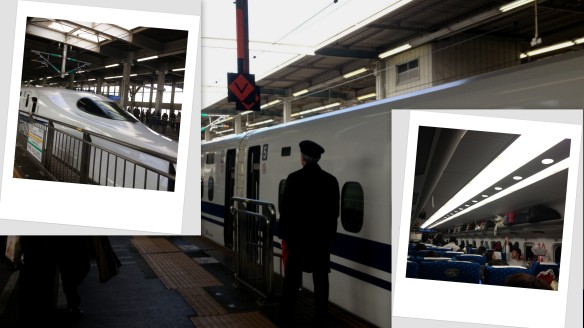When you’re travelling alone and something like this happens, it’s nobody’s fault but your own. Well, maybe the guide book could’ve mentioned that one of the most popular tourist sights in Japan is actually covered in scaffolding for five years! Ah, it did. I see it now, that hidden paragraph tagged on at the end that nobody reads. Surely this vital piece of information for the traveller justifies a text box?!
Himeji castle is one of the ”twelve surviving feudal-era fortresses” says the Rough Guide to Japan (2011 edition) and it goes on to give the history of the fantastic castle. I myself are more of an ‘atmospheric traveller’, I go to soak up the feel of the place, to watch the other tourists and to take photographs. The history sections of a guidebook seems to bypass my memory and leaves me with no idea what era something was built or who built it. That’s when I normally rely on a fellow traveller to fill me in, to be my guide for the day. I’ve had the pleasure of travelling with two history students, one of which loved castles and no doubt would’ve filled me in on all the details before we’d even got there. Yet here I was travelling alone and I still had no clue when this castle was built. (For your information, the guidebook reads ‘The present complex of moats, thick defensive walls, keeps and connecting corridors dates from around the early seventeenth century’.)
This day I made two large oversights; firstly, that the castle was not under renovation, secondly, that it would be open to enter. Seeming as it was the 29th December and the start of the New Year holiday, everything was closed. Even the souvenir shops. Yet the picture of me smiling in front of the castle sums up my reaction, I didn’t really care! It was a sunny day, I was neither too hot nor too cold and I had my camera.
As I walked around the perimeter of the castle I came across something that was interesting to me. A very serious game of croquet being played by retirees. Now I thought this was a game just played at tea parties in England, but it seems that the Japanese have taken this game to new levels. It is called geeto booru (gateball) and is a ‘fast-paced, non-contact, highly-strategic team game’ (Wikipedia). There is even a World Gateball Championship! I would have never have found this out if the castle was open.
I also met a very nice man who showed me where the famous Himeji-jo Koko-en gardens were which I was grateful for, except they were closed too. ”Ahh”, I sighed, back to the train station it is.
Yet this experience was softened by the fact I had saved money on not buying anything, so could justify taking the shinkansen (bullet train) to my next stop. For the equivalent of £50 I zoomed across 250km of mountainous land to arrive in Hiroshima exactly 57 minutes later. This was the best decision I’d made yet. The journey was five times quicker than taking the local trains and I got to experience the coolest form of transport in Japan, or even the world.
Before I stepped aboard the shinkansen I made sure it was heading to Hiroshima, as I didn’t want any more surprises that day. Once reassured by another passenger that the train was heading in the right direction, I found a seat by the window and sat next to two half-asleep Japanese women. This is normal on a Japanese train, but I thought I’d stay awake to watch the countryside go whizzing by. The blur of mountains, trees and towns became monotonous after a while and I became sleepy. The motion of the high-speed train is such that it’s very difficult to stay awake! Thankfully I woke up to the gently chimes of the overhead speaker and a woman’s voice in perfect English saying ”We have landed in Hiroshima”. Landed? Am I on a plane, a space craft or a train? I like the touch of showbiz about the shinkansen and got my bag to exit the aircraft, train.


